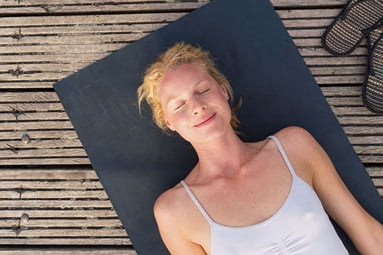
Keratosis pilaris: Persistent goose pimples

Content-Team SWICA
What causes keratosis pilaris?

What's the right treatment?
The most important thing when treating keratosis pilaris is regularity. Unfortunately, in most cases the condition doesn't totally disappear after being successfully treated. It will come back if you don't keep up the treatment.
- Moisturising creams are the best way to smooth rough skin. It works best if the cream contains ingredients such as urea (binds moisture to the upper skin layers) and salicylic acid or glycolic acid (break down excess keratin). It's best to apply the cream every day after showering.
- Important shower tips: Shower oils and products containing lactic acid such as Antidry Lotion or Noreva Kerapil are recommended by santé24 dermatologists. Hot shower water also dries out the skin.
- It can also help if you treat the affected areas once a week with a gentle scrub. The grains in the scrub help remove the dead skin cells.
Dermatological advice from santé24
SWICA offers free consultations to patients with chronic skin conditions. To participate, please complete the following questionnaire.
For your health: santé24 and SWICA Benecura
Do you have a health question? Our physicians and healthcare professionals at santé24 are available 24/7 on +41 44 404 86 86 for SWICA customers. In addition to telephone health advice, patients whose conditions are appropriate for telemedicine can receive medical services such as diagnostics, treatment, and even e-prescriptions for prescription medications.
Do you feel ill? The SWICA Benecura medical app makes it easy to carry out a digital SymptomCheck. You will receive a personal recommendation about what to do next. Send your information in encrypted form to the santé24 online practice for your telephone consultation to significantly shorten the assessment.







